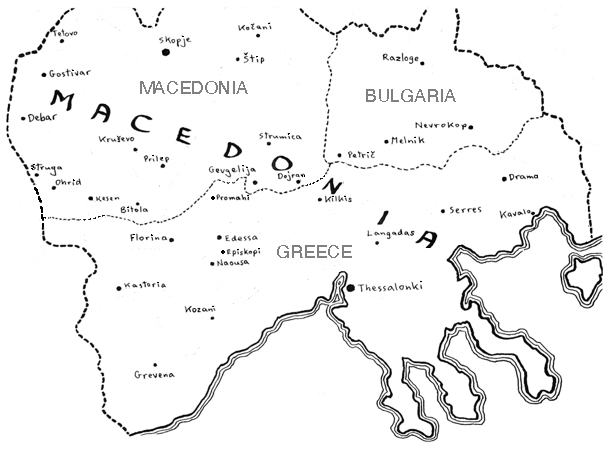
|
Folk Dance Federation of California, South, Inc.
|

|
CLICK AN IMAGE TO ENLARGE
The ethnic region known to folklorists as Macedonia extends today into three modern states. About three-fifths of it lies in northern Greece, about one-third in southern Yugoslavia, and the rest in the southwest part of Bulgaria.

In this region, political boundaries have intersected and re-intersected ethnic communities for centuries; political events have prompted or forced people to resettle. Today towns and dances may have different names in Greek and Slavic, sometimes as similar as Kostur (Slavic) and Kastoria (Greek) for a Macedonian town in Greece, or as distinct as Levendikos (Greek) and Pousteno (Slavic) for a Macedonian dance done near Lake Prespa on both sides of the Yugoslav-Greek border.
Some names are common everywhere, such as "gaida" for the Macedonian bagpipe. Some prove to be of Turkish origin, because Turks ruled Greek and Slav alike for 500 years – such as for the butchers' dance called Hassapikos (Greek) or Kasapsko (Slavic), from a Turkish word Kasap meaning "butcher."
Macedonian dances, whatever they are called, and regardless of political arguments about whom they belong to, are among the jewels of the Balkans. The Macedonian style of movement is a rare combination of strength and grace. The Macedonian sense of rhythm is probably unique. Those who love these dances grow used to hearing them called first strange, then fascinating, then inexhaustibly delightful. May you enjoy them too.